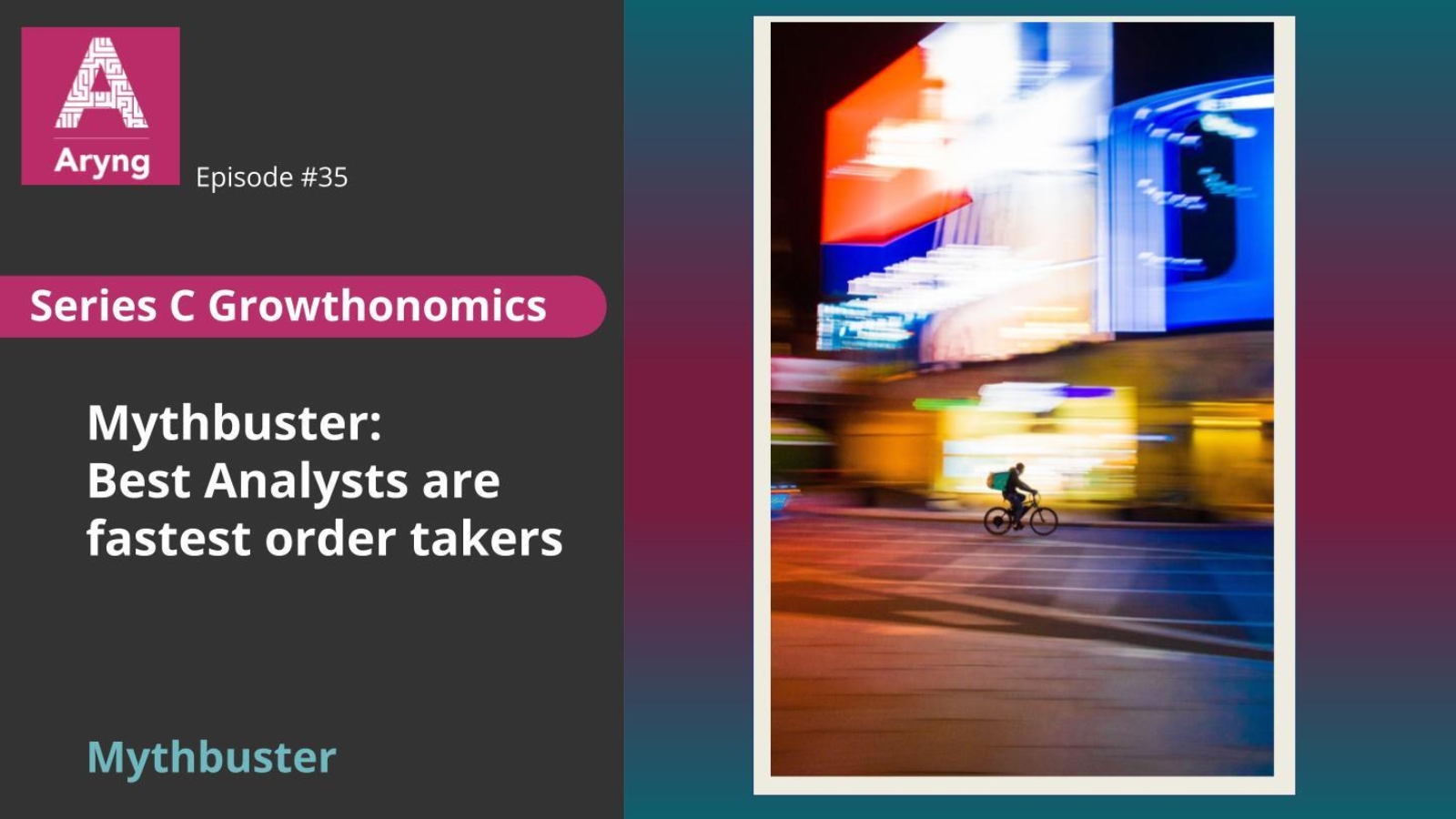Often, an analyst is a person who extracts necessary values from the database and produces values and insights for business managers. And thereby, the faster one can do this, the better analyst they are. Sounds familiar?
This post elaborates on the common misconception that the best analysts are the fastest order takers.
Speed of insights delivery is sure a skill for analysts, but more often than not, the insights might be irrelevant when it’s not addressing the right business situation.
Let’s look at how a typical analyst works.
Usually, the analyst gets a request through a message or as a Jira ticket. And more often than not, the asks look like a high-level issue where the business manager asks for the performance of some metric. The analysts will share this, and then the manager might ask for segments or specific points to understand the drivers of that performance.

Conversation between a business manager and a typical analyst
This is where the best analysts work different and improves the experience.
The so-called ‘best analyst’ try to understand the business need of the business manager and its drivers, along with the recent proceeding and changes. They use all this information to analyze the available data and get the most relevant insights.

Conversation between a business manager and a ‘best’ analyst
The best analysts focus on questions such as “why do you need this?”, “What actions can you take from it?”, “what is the implication,” and a whole bunch of business-relevant questions
Since they now understand the business issue and the supposed hypotheses, they can assess possible options and make business-relevant recommendations.
Using an analytics framework
To ensure transparency and alignment, the ‘best analyst’ also creates an analysis plan which lays out the business questions, the hypotheses, the possible outcomes, their actions, the expected timelines, the stakeholders involved, and so on.
An all-encompassing framework that Aryng works with is called BADIR.
Although the former approach produces a faster response, the latter approach got a lot of benefits, not limited to the following:
- It helps skip the back-and-forth between the manager and the analyst
- Create more informed and business-relevant recommendations
- Following a systematic process ensures that the analysts’ biases don’t influence the analyses
Conclusion
You must understand that the best analysts are not necessarily the fastest analysts who quickly produce analyses for your requests. They should be able to understand the business manager’s needs, look at the problem holistically, and create an end-to-end analysis that responds to all hypotheses and questions.





